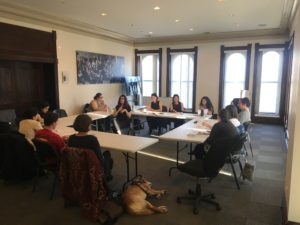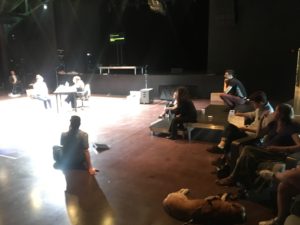Mondays with Mike: Busing, the rest of the story
July 15, 2019 • 6 Comments • Posted in Mike Knezovich, Mondays with Mike, politics
Behold the innocent school bus, source of contention.
I read an enlightening, if somewhat saddening, piece in the New York Times over the weekend. Times staff reporter Nikole Hannah-Jones pointed out that for all the hubbub about Kamala Harris busting Joe Biden for opposing busing, there has been no discussion about what it really was—or that, it actually worked.
She writes:
That we even use the word “busing” to describe what was in fact court-ordered school desegregation, and that Americans of all stripes believe that the brief period in which we actually tried to desegregate our schools was a failure, speaks to one of the most successful propaganda campaigns of the last half century. Further, it explains how we have come to be largely silent — and accepting — of the fact that 65 years after the Supreme Court struck down school segregation in Brown v. Board of Education, black children are as segregated from white students as they were in the mid-1970s when Mr. Biden was working with Southern white supremacist legislators to curtail court-ordered busing.
I’m one who has tended to think that busing was an ill-advised experiment. But the evidence the writer puts forth says otherwise. And as I read the article, every time I thought I had a, “but you’re not taking this or that into account…” moment, the writer had anticipated it. For example, just when I was thinking that neighborhood schools are the ideal…
Further, while it is true that close-by schools may be convenient, white Americans’ veneration of neighborhood schools has never outweighed their desire to maintain racially homogeneous environments for their children. Few remember that Oliver Brown, a petitioner in Brown v. Board of Education, sued for the right of his daughter, Linda, to attend her neighborhood school. Kansas’ state law allowed school systems to segregate at the behest of white parents, and so the Topeka school board bused Linda and other black children past white schools to preserve segregation. Across the South and in parts of the North, black children were regularly bused long distances across district and county lines, because as late as the 1950s, some local governments valued the education of black children so little and segregation so much that they did not offer a single high school that black students could attend.
And for all us Northerners who presume superiority on this and other racial issues, the article busts some myths. (Cue Randy Newman’s Rednecks here.)
And despite the constant assertion that “busing” failed, busing as a tool of desegregation, and court-ordered desegregation in general, was extraordinarily successful in the South.
In 1964, 10 years after the Brown decision, just 2 percent of black children in the South attended schools with white children. By 1972, nearly half were attending predominantly white schools. After a very short period of serious court intervention and federal enforcement, the South had gone from the most segregated region of the country for black children to the most integrated, which it remains 40-some years later.
The writer goes on to point out that today, New York’s public schools rank as the most segregated. Illinois is a close second. Eight of the top 10 most segregated states are in the North.
Basically, busing was a tool, not and end in itself. Ssegregation was ruled unconstitutional. Because of longstanding segregation in housing (which was no accident), remedying school segregation—and the accompanying gap in the quality of education between white and black schools—busing was essentially the only remedy in many cases.
And it worked not simply to alleviate segregation. From the article:
We now know that school desegregation significantly reduced the test-score gap between black and white children — cutting it in half for some black age groups without harming white children. No other reform has reduced the gap on this scale. Rather, the opposite is true: The test-score gap between black and white students reached its narrowest point ever at the peak of desegregation and has widened as schools have resegregated.
An economist and professor of public policy, Rucker C. Johnson at the University of California, Berkeley, studied the life outcomes of black children who got access to the trifecta of quality Head Start, increased school funding and desegregation. He saw the entire trajectory of their lives change. Compared with kids stuck in segregated schools, even their own siblings, they were more likely to graduate from high school and more likely to get out of poverty. As adults, they earned more, were less likely to go to jail and even lived longer. The earlier and longer these children got access to integrated schools, Dr. Rucker found, the stronger the results.
Anecdotally, an African American friend of ours who grew up in Boston was bused from the city to a suburban school from first grade through high school. She was part of a voluntary program, whereby the suburban district agrees to a certain number of students from the Boston public school attending via busing. (She was not part of the mandatory busing that set off violent reactions.) She would’ve preferred to have a nearby public school that measured up. But she said she got a much better education by attending the predominantly white suburban schools than she would’ve otherwise, and moreover was better prepared for life after school.
At the end of the article, the writer argues that, “Busing did not fail. We did.”
You might not agree, but I hope you’ll read the article—it’s chockfull of history, not all of it good.






